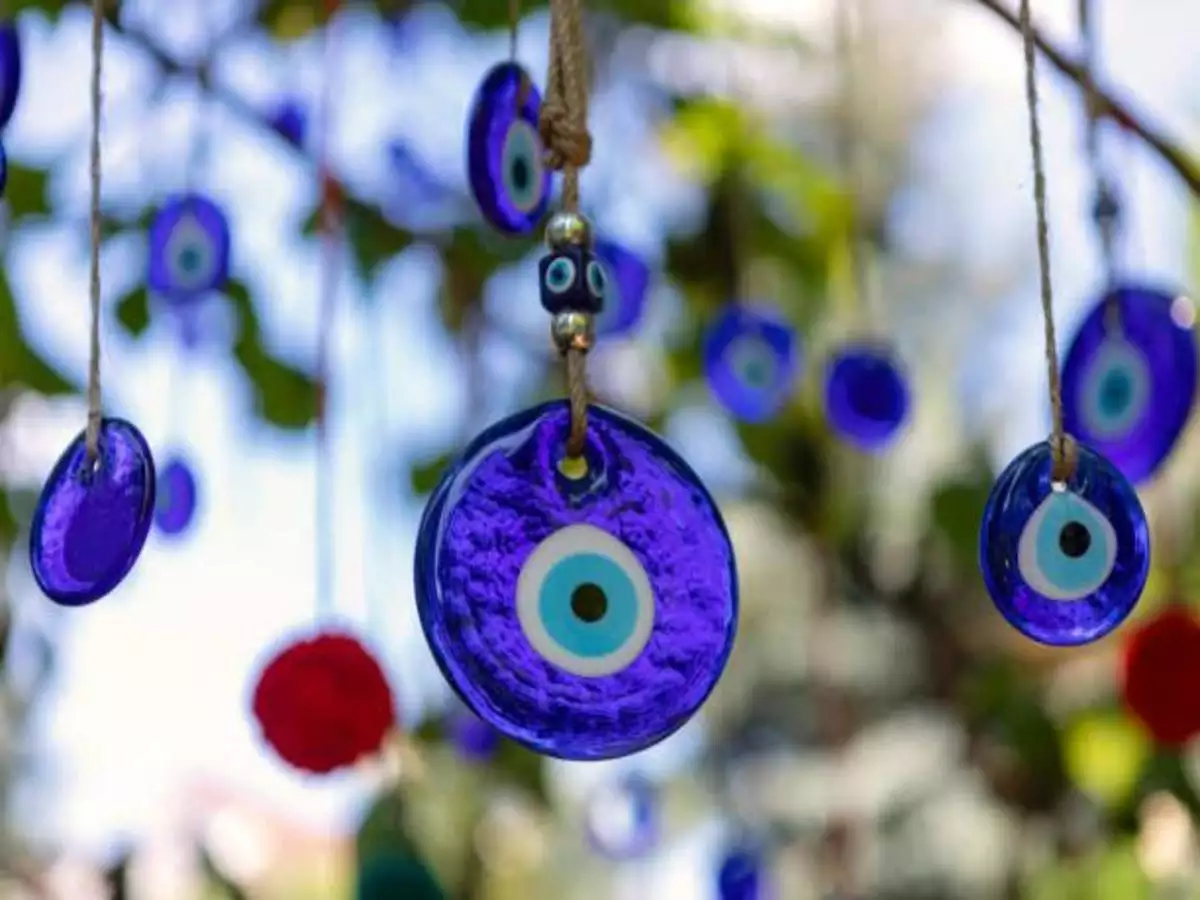The evil eye has been part of numerous cultures around the world, dating back to the ancient Greeks and Romans almost 3,000 years ago. It’s easily recognizable and is also one of the strongest symbolic images in the world. Wearing an evil eye is said to ward off evil forces, which is probably why you’ve seen this famous symbol many times.

WHAT DOES THE EVIL EYE MEAN?
In Greek culture, the evil eye is known as “mati” (μάτι) — a curse given to someone with a malicious glare that is said to give bad luck or loss to whoever receives it. You’ve probably heard of or seen someone giving you the “evil eye”, however, many people have come to believe this to be more than a saying. Hence the creation of evil eye jewelry and charms.
If someone is thinking or wishing negatively towards you, the evil eye will protect you from their ill intentions. This is why it’s important to wear an evil eye at all times. Having one of these accessories on your body will ward off any negative thoughts and will protect you all day.
WHEN AND WHERE DID THE EVIL EYE ORIGINATE?
The earliest record of belief in the evil eye goes back to ancient Greece and Rome, where the people believed that the evil eye was the greatest threat for anyone who has more money, fame, etc. than they deserve and those who are overly praised.
An evil eye is said to cause physical and mental illness, and that any disease that doesn’t have an apparent cause was received from the evil eye. These people also believed that the gods and goddesses used the evil eye to punish those who are proud of their achievements, destroying their pride to bring them back to the level of mortals.
WHAT IS THE SUPERSTITION ABOUT THE EVIL EYE?
The evil eye is one of the strongest symbolic images in the world, but despite the superstitions connected to them, the evil eye continues to be popular in various cultures.
Something interesting about the evil eye is that it keeps the same meaning no matter the country or the story. Evil eyes have always been associated with wanting to inflict pain, harm, or wishing misfortune on others. Giving the evil eye is a clear indication that there is an intention to do something bad to the object or person of focus. This superstition behind the evil eye continues to persist in modern days, with some saying that just its malicious appearance is powerful enough to bring an actual disaster to those given an evil eye.

WHAT IS THE EARLIEST KNOWN EVIDENCE OF THE BELIEF IN THE EVIL EYE?
Every continent shares the belief in the evil eye — in fact, people in Asia, the Middle East, Europe, and Central America all fear this symbol. According to Islamic culture, the Prophet Muhammad warned people of the evil eye in Book 26 of the Shahi Muslims, where it’s said that a bath must be taken to protect us from the influences of evil forces.
The evil eye also carries a powerful superstition in India, where Hinduism preaches that our eyes are the most powerful part of the body. Because of this, there is a strong fear of the “evil” look from the eye and many believe that it holds a huge amount of power. This fear is so strong that Hindus believe that even an “admirable” eye can bring bad luck, which may result in a scarcity of milk supply in cows. This comes back to the original belief of undue praise, first found in the beliefs of ancient Greeks and Romans. To counteract the effects of the evil eye, Hindus would offer the “admiring” glancer a bowl of milk.
Ashkenazi Jews, just like the Romans and Greeks, believe that excessive praise can be seen as a weakness in the eyes of evil. To prevent the effects of the evil eye, they will repeat the phrase “Keyn aynhoreh!” in Yiddish, which means “no evil eyes”.
In Brazil, there is a similar superstition as the evil eye that locals call the “fat eye”. It is believed that sincere compliments aren’t going to cause the evil eye, but insincere compliments may give one a string of bad luck.
In Europe, the myth of the evil eye originated with the idea that bad luck will befall those who are given a malicious or envious look. It is believed that witches were the biggest source of the evil eye, but those with rare eye colors were also seen as powerful beings that possessed the evil eye. An example of this superstition is how Germans feared those with red eyes, while in Ireland, an individual would be thought of as an evil eye sorcerer for having squinty eyes.
While the fear of the evil eye didn’t pass on to America, it exists as a form of a metaphor. Furthermore, the evil eye is seen as impolite and serves as a warning that the person giving out the evil eye may be planning something bad.
IN DIFFERENT LANGUAGES, WHAT IS THE TERM USED TO REFER TO THE EVIL EYE?
The term “evil eye” is spread throughout the world, and is known in many languages:
- mauvais œil in France
- böser Blick in Germany
- eayan alsharu in Arabic
- char atchk in Armenian
- aynore in Yiddish or ayin hara from Hebrew
- szemmelverés (eye beating) in Hungarian
- oko proroka (prophetic eyes) in Polish
- ondaögat in Swedish
- jettatura in Sicilian
- olho gordo (fat eyes) in Brazilian or olho mau in Portuguese
- mal de ojo in Spanish
- droch shùil in Irish
- mati in Greek














